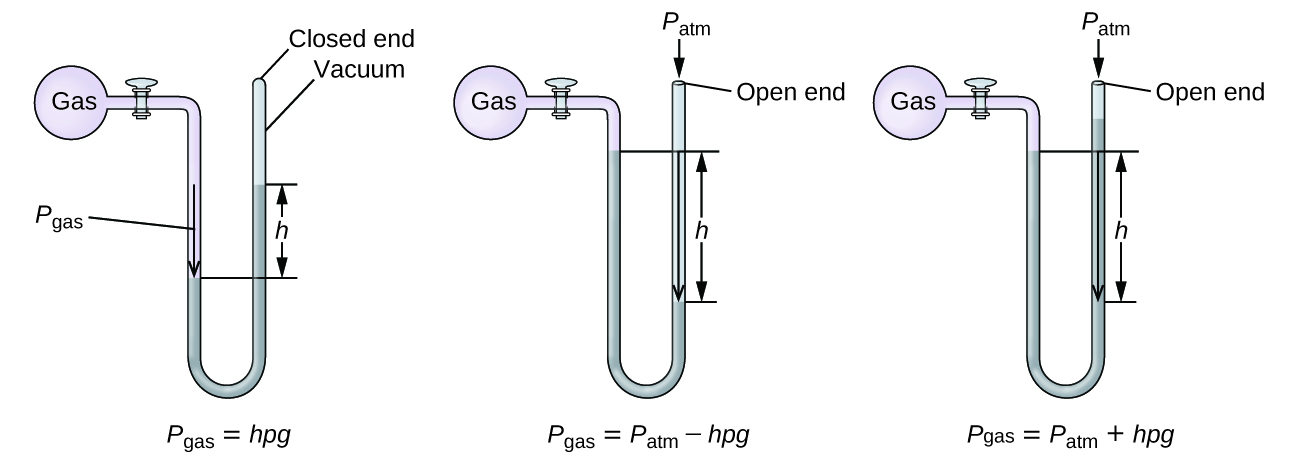

After exiting the furnace, it is quenched almost immediately lest it continue to break down, eventually becoming elemental carbon and molecular hydrogen.Įxample 4.5 Effect on Velocity during Ethane CrackingĪpproximate the effect on the velocity of ethane as it is cracked in a furnace to form ethylene when it is under 30 psig while flowing at 950 scf/min through a nominal 4-inch schedule-80 pipe entering the furnace at 350☏ and exiting at 1,550☏. At that temperature, ethane starts to “pyrolyze” and form ethylene with a double bond as two hydrogen atoms are literally broken off.
PRESSURE CHEMISTRY CALCULATOR CRACKER
In those crackers, 1 mole of ethane will produce 1 mole of ethylene and 1 mole of hydrogen according to the chemistry of:Īn ethylene cracker is essentially a high-temperature furnace in which ethane flows through the piping, reaching temperatures on the order of 1,500☏ in a matter of a few milliseconds. Those crackers use steam with the ethane in a complex set of chemical reactions that reduce the amount of solid carbon formed, consequently reducing the cracker’s “coking” caused by the deposition of elemental carbon. Recently, the construction of a number of ethylene crackers has been announced in the Gulf Coast area due to the abundance of natural gas that contains ethane. Not only are relative changes affected by temperature and pressure, but they are also affected by a change in the number of moles of gas when a chemical reaction occurs. Note that all of the dimensions cancel out only leaving the ratio, which by definition is dimensionless. Next, we convert temperatures from degrees Fahrenheit into degrees Rankin:įinally, we rewrite Equation 4.12 with V 2 = V 1 and n 2 = n 1 to give However, most times that number is measured and recorded by the experimenter.įirst, we convert pressure from psig to psia: In that case, we could calculate the starting pressure of the gas. On the other hand, we may be in a laboratory where the reactor is weighed before and after it is charged. It may seem that we need to calculate the amount of gas charged to the reactor, but that is not the case.

Equation 4.12Įxample 4.3 Effect of Temperature on Pressure of a Batch ReactorĬalculate the expected pressure of a 1.748 ft 3 batch reactor charged at 135 psig and heated from 95☏ to 1,650☏.īefore plugging in a bunch of numbers, look at the problem. So, what is the easiest way? Simply use Equation 4.11 to make a ratio of the variables before and after this gives us Equation 4.12. We could also go back to Boyle’s Law and Charles’s Law if we were changing only one variable, but due to thermodynamic effects we will discuss in the next chapter, the temperature of a system will usually change whenever the pressure changes. In addition, it also involves looking up and confirming one of the gas constants previously described even if they have been memorized. However, most of the time not all of the variables are known for this method or it involves a lot of unnecessary arithmetic. The most obvious is to “plug” all of the numbers into the equation each time there is a change and “turn the crank” to calculate a new volume or pressure, or whatever is unknown. There are several ways that Equation 4.11 can be used. Hint: What was the number of significant figures in the mass of methane? This result is expressed in only 3 digits, although it can be calculated to more. The molecular weight of methane is about 16.04, which is composed of one atom of carbon with an atomic mass of 12.00 amu and 4 atoms of hydrogen with atomic masses of 1.01 amu:Ĭhecking for dimensional consistency, we see that lb mol cancels with lb mol, atm cancels with atm, and °R cancels with °R, leaving only ft 3, which is the appropriate unit for our answer of 18.5 cubic feet. Finally, we can substitute the values previously determined into the rewritten equation to calculate the volume.Īs outlined above, we must calculate the number of pound moles in 11.0 lbs of methane.

Fifth, we must select the appropriate ideal gas constant and use it with a rewritten form of Equation 4.11 to determine the volume of 11.0 lbs of methane gas. Third, we must convert temperature in degrees Fahrenheit into absolute degrees Rankin and, fourth, convert pressure from psig into psia.

In a second step, after establishing a basis, we must convert the mass of methane that will be the basis into pound moles. First, we must determine the question, which is to calculate the volume of a quantity of gas at a given temperature and pressure. There are several steps involved in this calculation. Example 4.2 Volume of 11.0 Pounds of Methane at 80☏ and 200 psigĬalculate the volume of 11.0 lbs of methane gas at 200 psig pressure and 80☏.


 0 kommentar(er)
0 kommentar(er)
